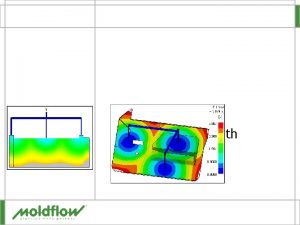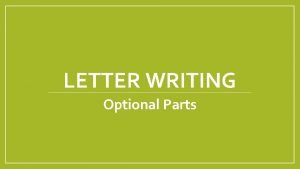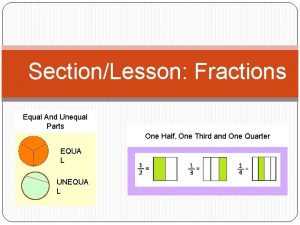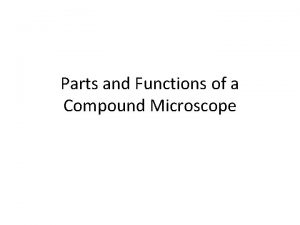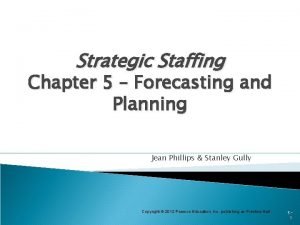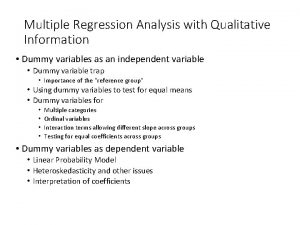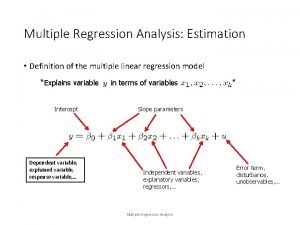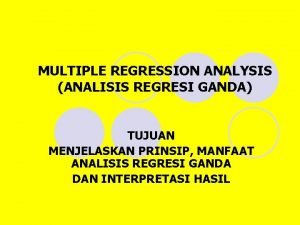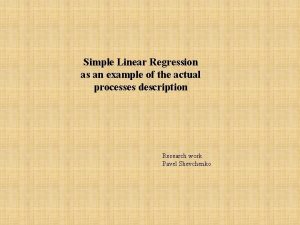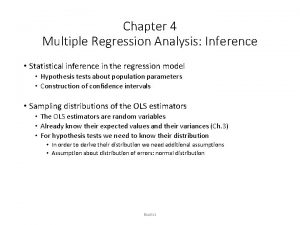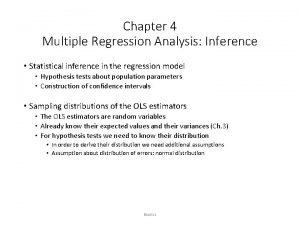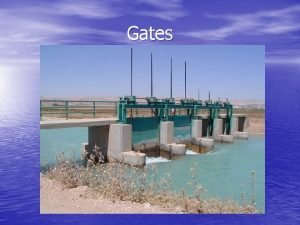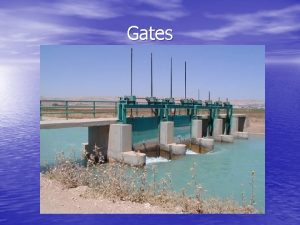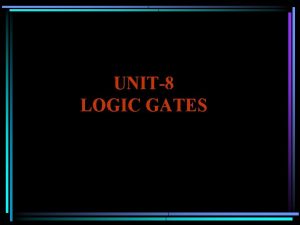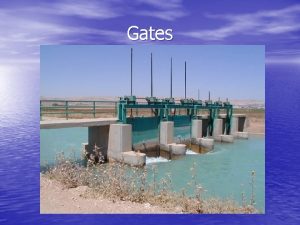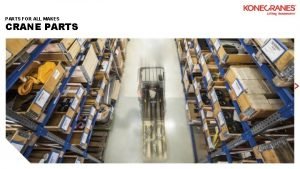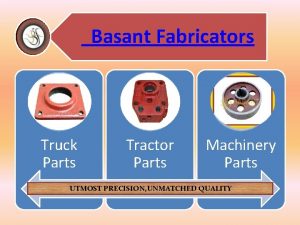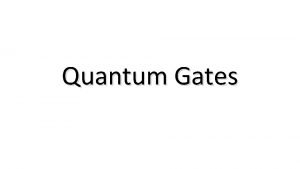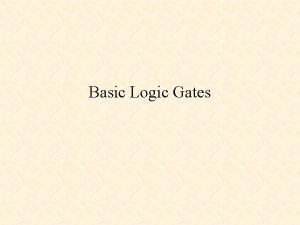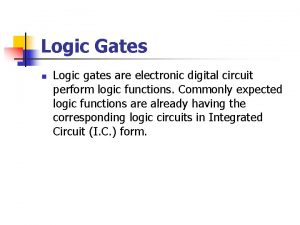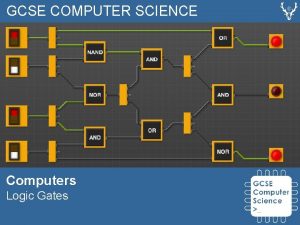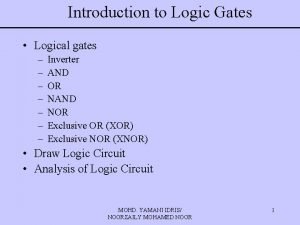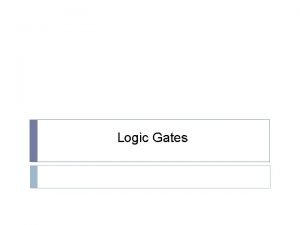Analysis of Parts with Multiple Gates Multiple Gates




















- Slides: 20

Analysis of Parts with Multiple Gates

Multiple Gates § Aim – Determine optimum number and location of gates § Why do it – Use multiple gates to reduce pressure and clamp force – Control weld line locations § Overview – Review symmetrical and non-symmetrical gate locations – Molding window analysis - determines number of gates – Fill analysis § No runners - Defines final gate location § With runners – Size feed system

Multiple Gate Considerations § Filling pattern – Produce or maintain balanced filling § Over packing within the cavity – Prevent or eliminate over packing § Weld line quality & location – Position weld lines in nonsensitive areas § Air traps – Prevent air traps at converging flow front § Orientation – Unidirectional § Dimensional tolerances – Pack uniformly § Gate vestige – Lower flow rate/gate can have smaller size § Sink marks – Better packing to reduce sinks § Warpage – Possibly less warpage, better packing, unidirectional orientation

Types of Multiple Gate Problems § Symmetrical parts/gate locations § Non-symmetric gate locations

Symmetrical Gating § Each gate fills about the same volume § Flow length from each gate the same

Non-Symmetric Gate Locations § Part geometry not naturally balanced § Number of gates not strictly determined by part geometry or pressure – Must have enough gates to keep the fill pressure low – More may be needed to achieve balance or to position weld lines – Clamp force may be a consideration § Volume and pressure from each gate probably not the same

Fast Fill Analysis § § Midplane and Fusion only Non-Isothermal Non-Newtonian Incompressible – No-PVT used § Analysis sequence – Fast fill § Results – – – – Fill time Pressure at V/P switchover Temperature at flow front Time to freeze Air traps Pressure at end of fill Weld lines

Clamp Tonnage § Clamp tonnage calculated during Flow analysis – Based on XY plane as parting plane – Clamp force contribution for each element added up § Can turn off calculation for selected elements – Set in property for element § Set molding machine clamp tonnage limit in machine properties via Flow Advanced Options

QUESTIONS?

Exercise § Drawer – Symmetrical – Gate locations defined – Determine gate sizes § Door panel – – Non-symmetrical Gate locations not determined Weld lines kept to a minimum Clamp tonnage a problem

Exercise - Drawer § Run a molding window analysis on the drawer – Material Polystyrol 165 H – Decide on the processing conditions to use § Run a fill analysis on the drawer – Verify the processing conditions – Use as benchmark for runner analysis § § Use runner wizard to add the 3 hot drops per drawing Run flow analysis with hot runners Evaluate flow balance Change drop diameters in 1 mm increments to improve the balance

Drawer

Door Panel § Gate on underside of the part – The tool will have cavity ejection – This will put the “Class A” side of the part in the moving half of the tool § Material – ABS, Kralastic SXB-367 § Define molding machine with clamp force of 1200 tons – 80% of machine limit

Door Panel § Use gate locator to begin looking at gate locations – Gate on underside of part § Run molding window analysis – Look for conditions that minimize pressure to fill – Use to help determine gate locations § Run fast filling analysis – Optimum processing conditions – Chosen gate location § Adjust gate locations or process as necessary to achieve a balanced and full part PL Underside

Door Panel - Results Interpretation § Review screen output – Review filling phase table – Review when the clamp tonnage was hit § Fill time – How balanced is it – What is left to fill when the clamp tonnage limit was reached § Pressure – What is overpacking? § Weld lines and gas traps – High quality?

Door Panel § Design a hot manifold system – Drop length 400 mm from underside of part – Gate length 2 mm – Locate the sprue, § Sprue diameter 12 mm, length 25 mm – Size § Gate diameter § Drop diameter § Manifold diameter § Run flow analysis with hot runner system § Size drops as necessary to optimize the filling pattern

Door Panel – Iterate § Subtle changes can make a big difference

Door Panel - One Possible Solution?

Door Panel - One Possible Solution?

Door Panel - One Possible Solution? Formation of Weld lines and gas traps, a potential problem
 Gates parts locator
Gates parts locator Multiple probe vs multiple baseline
Multiple probe vs multiple baseline Shared memory mimd architecture
Shared memory mimd architecture Optional element in business letter
Optional element in business letter Equal and unequal fractions
Equal and unequal fractions Compound microscope parts and functions drawing
Compound microscope parts and functions drawing The six chief commandments of the catholic church
The six chief commandments of the catholic church A transition analysis can account for multiple moves.
A transition analysis can account for multiple moves. Multiple regression analysis with qualitative information
Multiple regression analysis with qualitative information Multiple regression analysis estimation
Multiple regression analysis estimation Multiple regression analysis adalah
Multiple regression analysis adalah Multi variance analysis
Multi variance analysis Multiple linear regression analysis formula
Multiple linear regression analysis formula Multiple regression analysis estimation
Multiple regression analysis estimation Dataset multiple linear regression
Dataset multiple linear regression Multiple regression analysis inference
Multiple regression analysis inference Inference
Inference Multiple regression analysis inference
Multiple regression analysis inference Poetry analysis multiple choice questions
Poetry analysis multiple choice questions Hair et al
Hair et al Multiple scale analysis
Multiple scale analysis
